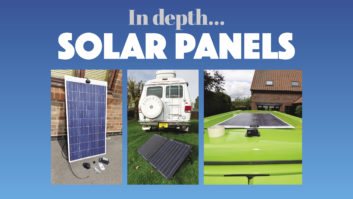[tl:gallery index=0 size=456×249]
Wireless charging pads are the current big must-have amongst gadget fans – instead of having to plug your phone, laptop, etc. into a charger, you fit it with a special case that charges it up wirelessly, via an electromagnetic field, whenever it is placed on or close to a specially designed ‘induction charging’ unit.
This technology is capable of transferring energy over short distances wirelessly, and so it’s no surprise that the automotive world has taken notice, since plug-in electric cars are being furiously developed by car manufacturers across the world. Late last month American automotive components supplier Delphi announced that it was partnering with induction charging specialist WiTricity Corp. to produce a wireless charging solution for electric vehicles. The system uses a ‘power source resonator’ which is connected to the mains supply and embedded in a parking space or the floor of a garage, and a corresponding ‘power capture resonator’ built into the undercarriage of the vehicle. The vehicle is parked over the ‘source resonator’ and power transfers to the ‘capture resonator’ over the air, and onward to the batteries. The system is able to transfer 3300 Watts, which is sufficient to charge an electric car at a similar rate to a domestic power outlet.
Looking at the diagram of the system, though (see above), made me think that it would be ideal for a pitch on a campsite. It isn’t likely to happen for some time – since the motorhome industry is far more conservative with technology than the car industry, and new tech tends to be adopted relatively late – but imagine having one of these ‘capture resonators’ on the underside of your ’van, and one of these ‘source resonators’ embedded in the super-pitch of the future… no more fiddling about with hook-up leads, just roll onto the pitch and your leisure battery starts charging. In the even more distant future, when long-range electric commercial vehicles become a reality (and there are already some prototype electric cars capable of doing a few hundred miles on a single charge) you’d even be able to use this to charge up your ‘van for the next day’s touring. I imagine pitch fees will probably be higher by then, but hey, it beats driving for ages hunting for a fuel station.









